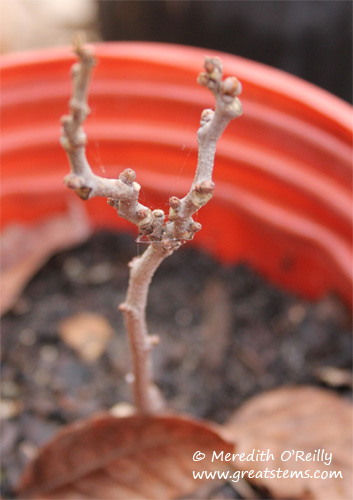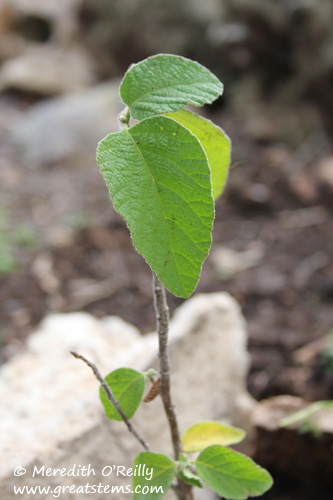I’m honored to have been a witness to the transformation of an ordinary, high-traffic area of an Austin schoolyard lawn to a most outstanding wildlife habitat, and I just have to show it off.
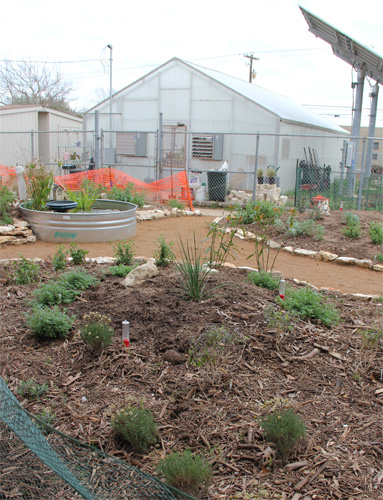
The Murchison habitat, with the school’s greenhouse
and solar panel in the background. Temporary fencing
helps discourage deer while young plants are growing.
The habitat team at Murchison Middle School, led by science teacher Bret Korba, had the opportunity to participate in a small grant program being offered by National Wildlife Federation to several Austin-area schools. In order to receive the grant, each habitat team had to fulfill multiple requirements, including providing a detailed habitat design and implementation plan.
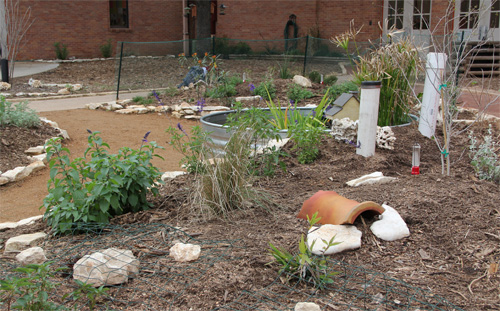
All the basic elements of a habitat are provided:
food, water, cover, and places to raise young.
The Murchison team hit the ground running, starting right away to make their project a reality. They selected a site near their school’s existing greenhouse and vegetable garden, they studied student traffic and water run-off across the site, and they contacted the district grounds department for project site approval. Throughout the process, they kept their administration and PTA informed and involved, soliciting assistance when needed.
Here’s the area before any work was done:
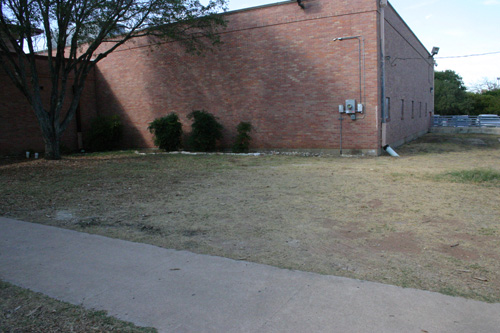
A blank slate, if ever I saw one!
Dedicated parent volunteer Narda Fisher created a beautiful design and wildlife-friendly plant list, and the team moved ahead with planning workdays, ordering materials, and gathering volunteers. The goal, aside from creating a functional outdoor learning space, was to have a successful wildlife habitat filled with almost all native Texas plants.
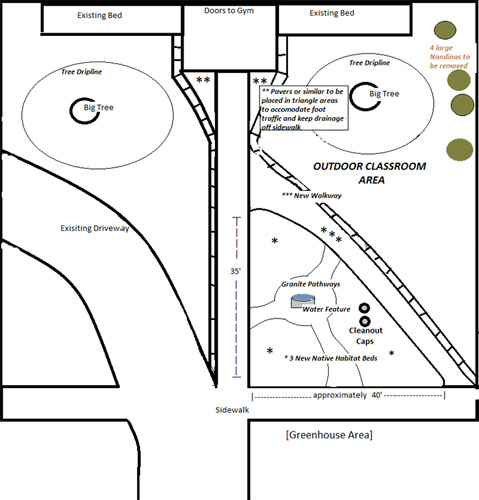
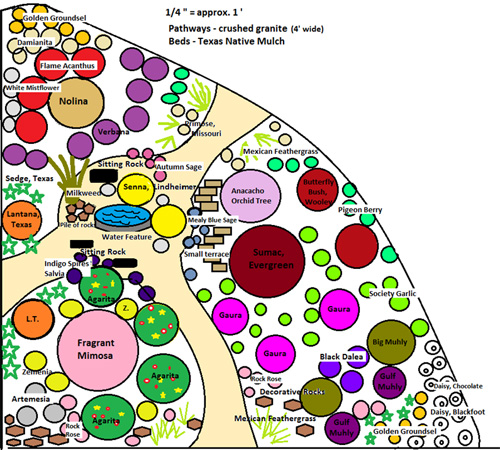
What I love about this design is that it shows how easily a colorful visual of a habitat plan can be created using just a simple program like Paint. The advantage to making a colorful representation of a school’s future garden is that you can share it with students, parents, and the community to encourage their enthusiasm and volunteerism, and you can also show it to local businesses and organizations to help solicit donations of materials or funds.
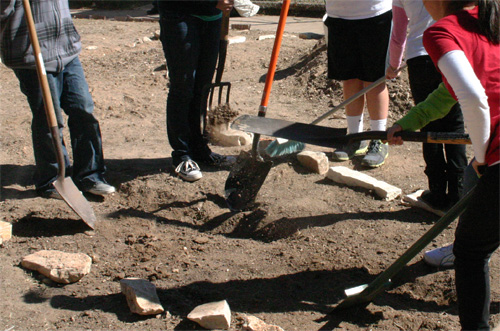 Right away, students became a part of preparing the beds, digging out grass, moving rocks, and marking pathways. Some of the students were members of the school’s Green Team, a large afterschool club that takes care of Murchison’s vegetable garden and sometimes other areas of the school grounds. Take a look at the thriving vegetable garden the students have been working on:
Right away, students became a part of preparing the beds, digging out grass, moving rocks, and marking pathways. Some of the students were members of the school’s Green Team, a large afterschool club that takes care of Murchison’s vegetable garden and sometimes other areas of the school grounds. Take a look at the thriving vegetable garden the students have been working on:
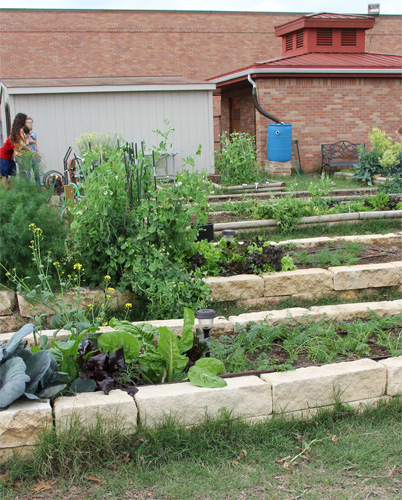
My stomach still growls with hunger as I remember the delicious smell of eggs and fresh herbs that teacher and habitat team member Benjamin Newton was cooking in the greenhouse for the Green Team students one day when I stopped by with some native seeds — yum. FYI, this student club meets twice a week, and their dedication and active involvement really shows.
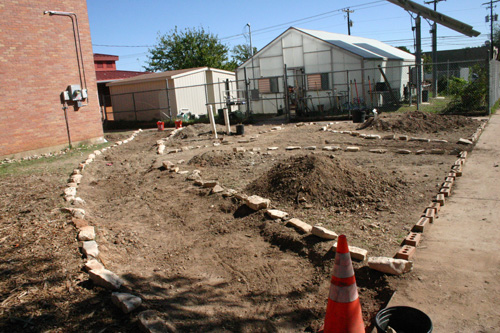
View of early progress
During school, several Murchison teachers brought their classes out to help with the garden. Additionally, a couple of volunteer Saturday workdays brought rapid progress to the final bed preparation and planting.
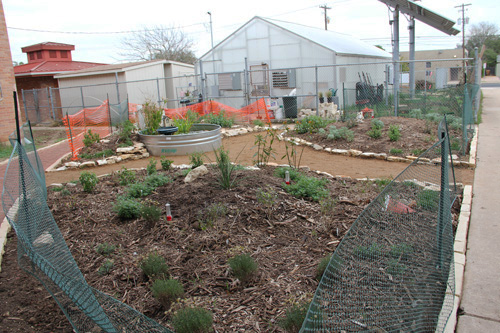
Same view, after habitat completion
In order to provide well-drained soil for the native plants, volunteers and students utilized some of the soil dug out from pathways and combined it with supplemental soil, the excellent Thunder Dirt from GeoGrowers.
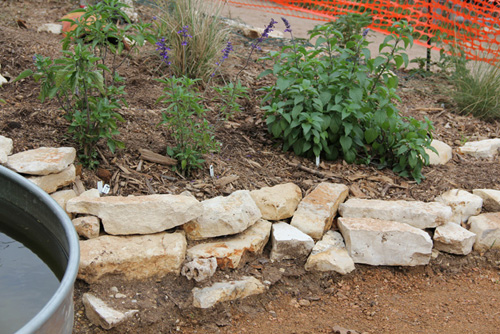
A simple unmortared retaining well keeps the mounded soil in place while allowing lizards and other small wildlife to seek shelter. The rocks were collected from a school neighbor who was having construction done on her house. The single-shred mulch used to protect the plants and suppress weeds was donated by a school parent.
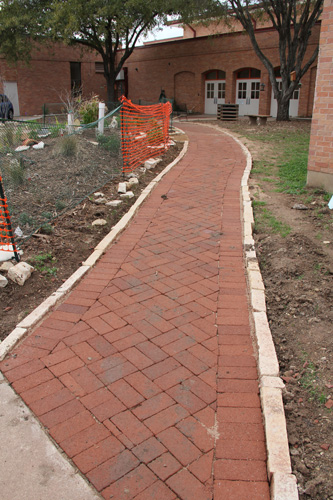 While the team sought out donations where they could, part of their grant funds went to purchasing plants, soil, decomposed granite, bricks, and the stock tank. The PTA assisted by paying for someone to level and lay down the brick path that guides most of the daily student traffic between their classes. For the interior habitat pathways, the habitat team chose decomposed granite.
While the team sought out donations where they could, part of their grant funds went to purchasing plants, soil, decomposed granite, bricks, and the stock tank. The PTA assisted by paying for someone to level and lay down the brick path that guides most of the daily student traffic between their classes. For the interior habitat pathways, the habitat team chose decomposed granite.
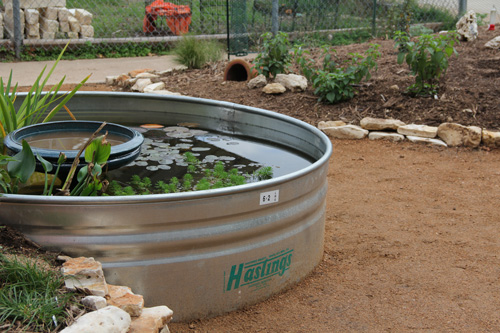
Little touches really enhance the garden. A tall birdbath within the pond makes it easier for birds to drink, and rocks within the pond offer an escape route for any animal that might accidentally slip in. Ongoing residents of the pond include Gambusia, or mosquito fish.
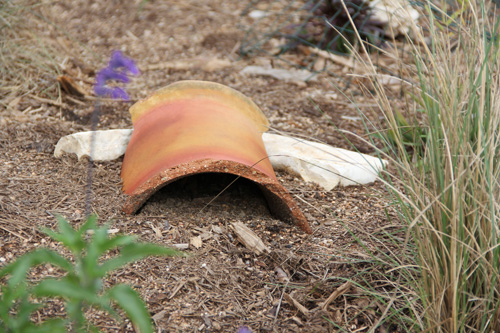
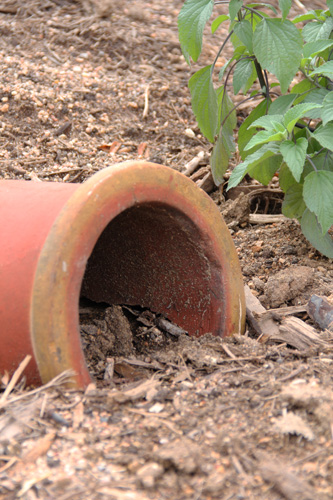 Broken pots create perfect little toad shelters, and there’s even a solar-panel water wheel in the pond. Nearby, birdfeeders and birdhouses adorn large trees.
Broken pots create perfect little toad shelters, and there’s even a solar-panel water wheel in the pond. Nearby, birdfeeders and birdhouses adorn large trees.
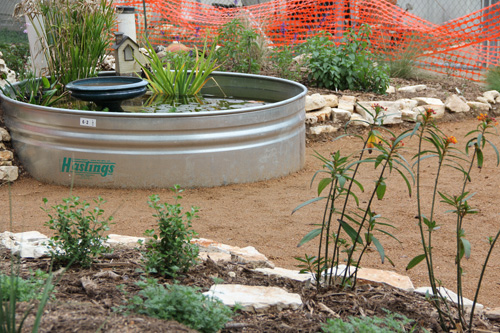 Already, Murchison’s habitat team and Green Team are prepping new habitat beds and an area for a large rain tank. With such a variety of elements, Murchison teachers will be able to take their classes outdoors to utilize the new habitat for countless curriculum applications.
Already, Murchison’s habitat team and Green Team are prepping new habitat beds and an area for a large rain tank. With such a variety of elements, Murchison teachers will be able to take their classes outdoors to utilize the new habitat for countless curriculum applications.
Schoolyard habitats like this are so critical for our children who, in a world of technological dependency and urban concrete, often do not have much direct exposure to nature. Studies have shown that outdoor time helps reduce childhood obesity and helps increase emotional health, academic success, and creativity. Their health and Earth’s future are dependent on kids spending time outdoors, connecting with nature.
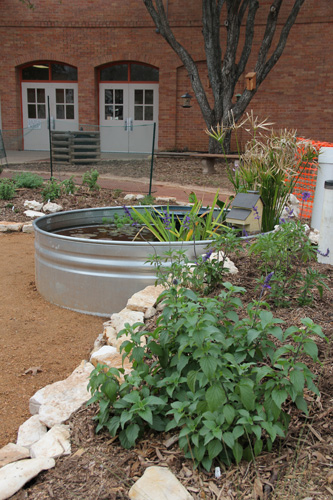 It takes a team to create a new schoolyard habitat, whether it be small or large. The team can be made of teachers, students, parents, school staff, and/or community members, and working together, they can change the world, so to speak. But for a schoolyard habitat to be the most successful, it’s also imperative that the school’s administration offer positive support, that many teachers get involved, and that the school district help open doors to allow change and outdoor learning time on school grounds.
It takes a team to create a new schoolyard habitat, whether it be small or large. The team can be made of teachers, students, parents, school staff, and/or community members, and working together, they can change the world, so to speak. But for a schoolyard habitat to be the most successful, it’s also imperative that the school’s administration offer positive support, that many teachers get involved, and that the school district help open doors to allow change and outdoor learning time on school grounds.
But every school’s situation is different, and sometimes volunteers have a big role in helping a project like this succeed. If you have a chance to be a part of helping design, build, or maintain a school habitat or vegetable garden, I do hope you’ll jump at the chance and help kids have an outdoor space they can learn and benefit from.
I commend the Murchison habitat team and administration for sharing their love of nature with their students and getting them outdoors, and for creating a beautiful habitat that will help provide for wildlife for years to come. Murchison Middle School, congratulations!
If you are interested in creating an outdoor learning space at your local school, visit NWF’s webpages on schoolyard habitats for excellent resources such as how-to guides, lesson plans, and more.
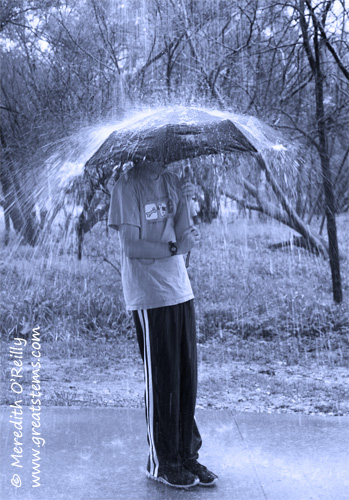 The rain was awesome this past weekend. That was the most pitiful excuse for an umbrella, though.
The rain was awesome this past weekend. That was the most pitiful excuse for an umbrella, though.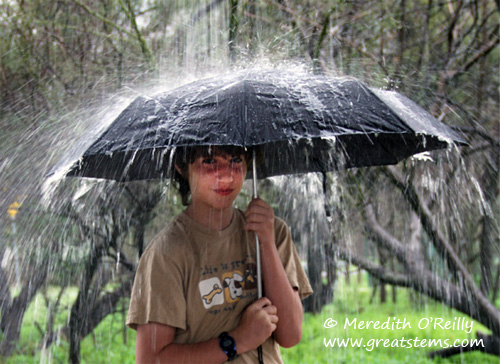 During the festival, I got to help kids “dig” up plastic worms with chopsticks (like an Ibis), pick rice “insects” from a log with tweezers (like a Wren or Warbler), strain duckweed from the surface of water (like a duck or shoveler), and experience other bird bill adaptations. I also helped kids discover what it’s like to be a migratory bird, facing all sorts of dangers to (hopefully) get to safe habitats. Some of the other activities at the festival included birding (of course), hiking, live bird demos, bird feeder projects, and bird drawing. My son drew me a picture of a most wonderful cardinal and waterfowl scene, but alas, he won’t let me share it online. But he spent an hour on it — believe me, it’s excellent.
During the festival, I got to help kids “dig” up plastic worms with chopsticks (like an Ibis), pick rice “insects” from a log with tweezers (like a Wren or Warbler), strain duckweed from the surface of water (like a duck or shoveler), and experience other bird bill adaptations. I also helped kids discover what it’s like to be a migratory bird, facing all sorts of dangers to (hopefully) get to safe habitats. Some of the other activities at the festival included birding (of course), hiking, live bird demos, bird feeder projects, and bird drawing. My son drew me a picture of a most wonderful cardinal and waterfowl scene, but alas, he won’t let me share it online. But he spent an hour on it — believe me, it’s excellent.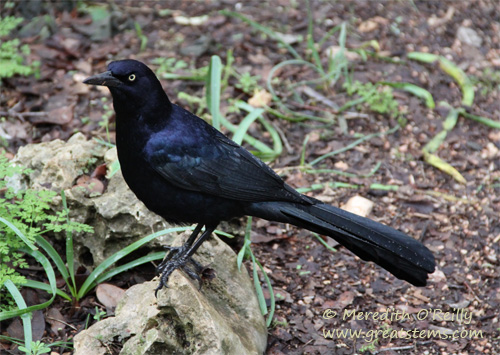 After the festival, Nolan and I toured the Austin Nature and Science Center, one of my absolute favorite places in Austin. At last I was able to bring out the camera, and waiting to pose for me (or to see if I’d be silly enough to drop food) was one of our most successful urban birds, the Great-Tailed Grackle.
After the festival, Nolan and I toured the Austin Nature and Science Center, one of my absolute favorite places in Austin. At last I was able to bring out the camera, and waiting to pose for me (or to see if I’d be silly enough to drop food) was one of our most successful urban birds, the Great-Tailed Grackle.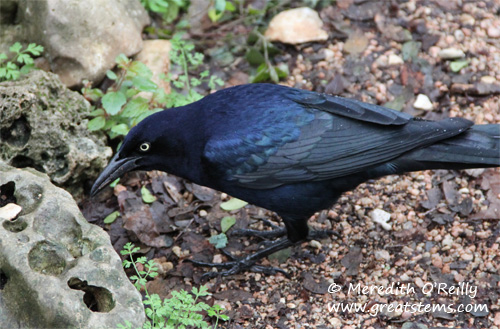 Grackles aren’t everyone’s favorite bird, but I actually like them (provided I’m not walking or parking under a giant flock of them). For one thing, they actually are quite striking, especially the large males with their dark iridescent blue feathers.
Grackles aren’t everyone’s favorite bird, but I actually like them (provided I’m not walking or parking under a giant flock of them). For one thing, they actually are quite striking, especially the large males with their dark iridescent blue feathers.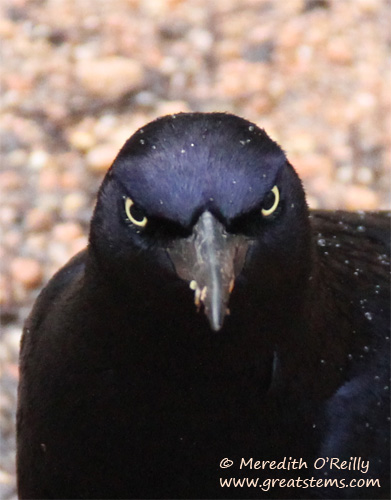 See that bill? It’s a generalist shape — not too long, not too narrow, not too flat, not too curved. That means it’s multi-purpose, letting a Grackle eat just about anything it wants — grains, insects, slugs, worms, small mammals, fish, frogs, eggs, pizza, popcorn, hamburgers. And that’s a big reason why Grackles have adapted so easily to an urban environment. They particularly appreciate sloppy humans.
See that bill? It’s a generalist shape — not too long, not too narrow, not too flat, not too curved. That means it’s multi-purpose, letting a Grackle eat just about anything it wants — grains, insects, slugs, worms, small mammals, fish, frogs, eggs, pizza, popcorn, hamburgers. And that’s a big reason why Grackles have adapted so easily to an urban environment. They particularly appreciate sloppy humans.












 Broken pots create perfect little toad shelters, and there’s even a solar-panel water wheel in the pond. Nearby, birdfeeders and birdhouses adorn large trees.
Broken pots create perfect little toad shelters, and there’s even a solar-panel water wheel in the pond. Nearby, birdfeeders and birdhouses adorn large trees.
 It takes a team to create a new schoolyard habitat, whether it be small or large. The team can be made of teachers, students, parents, school staff, and/or community members, and working together, they can change the world, so to speak. But for a schoolyard habitat to be the most successful, it’s also imperative that the school’s administration offer positive support, that many teachers get involved, and that the school district help open doors to allow change and outdoor learning time on school grounds.
It takes a team to create a new schoolyard habitat, whether it be small or large. The team can be made of teachers, students, parents, school staff, and/or community members, and working together, they can change the world, so to speak. But for a schoolyard habitat to be the most successful, it’s also imperative that the school’s administration offer positive support, that many teachers get involved, and that the school district help open doors to allow change and outdoor learning time on school grounds. 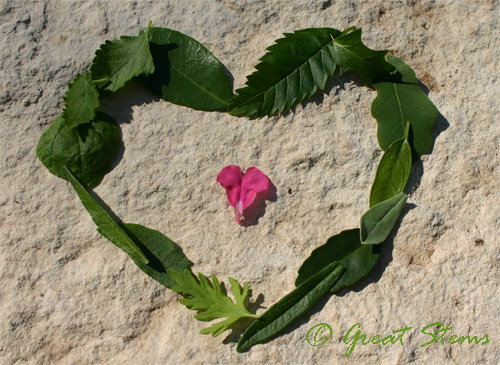
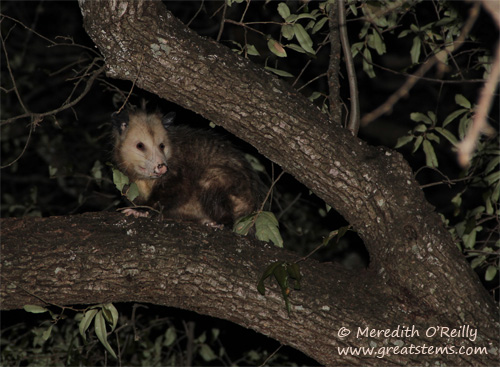 Now there’s a face only a mother could love (well, and me — but then again, I’m technically a mother, so I guess it counts).
Now there’s a face only a mother could love (well, and me — but then again, I’m technically a mother, so I guess it counts).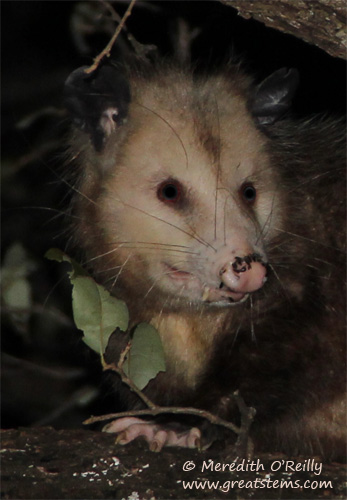
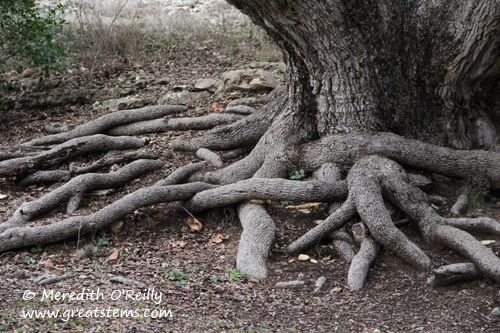
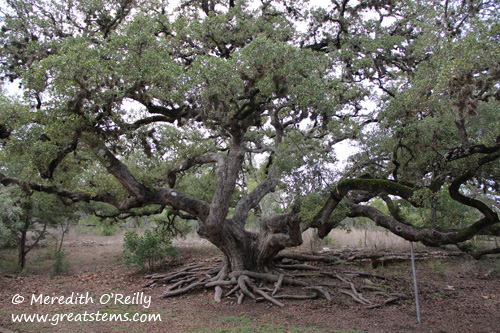
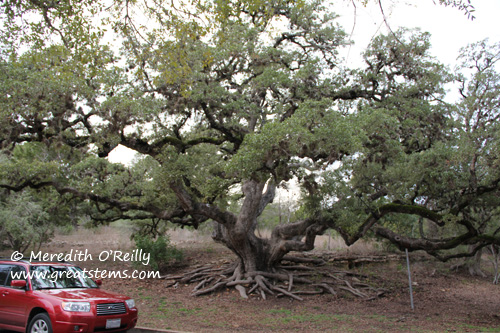
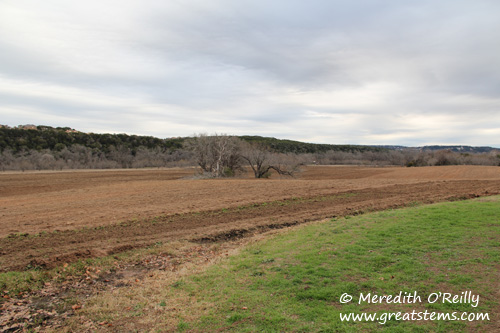
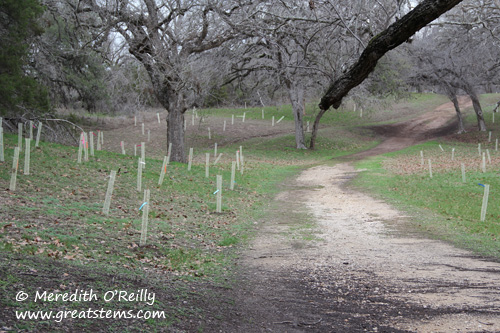
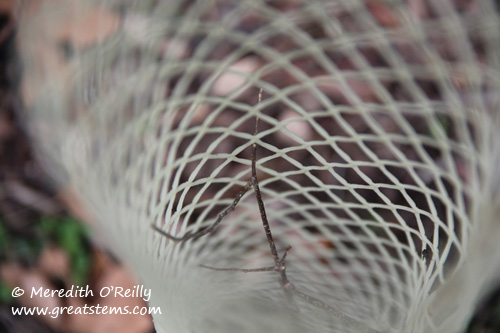
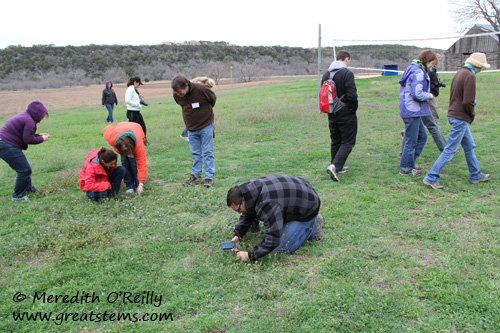
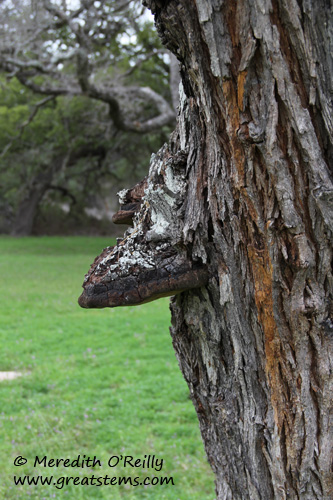
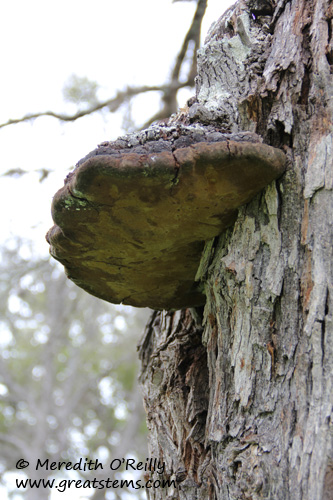
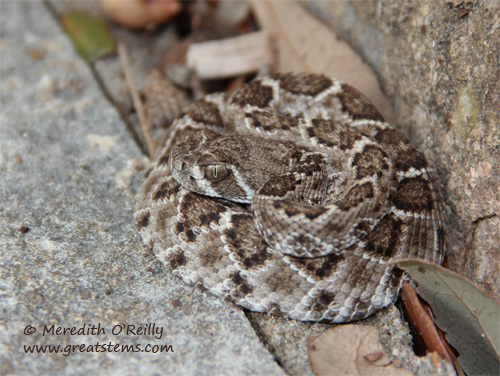
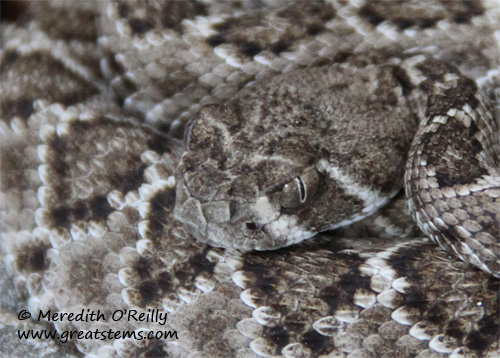
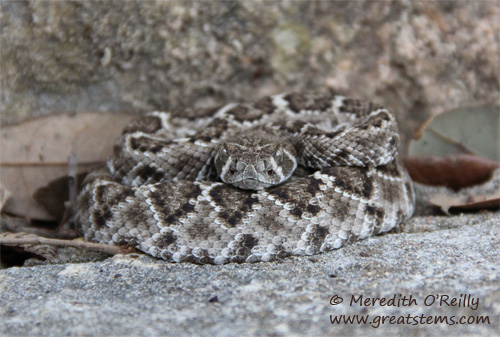
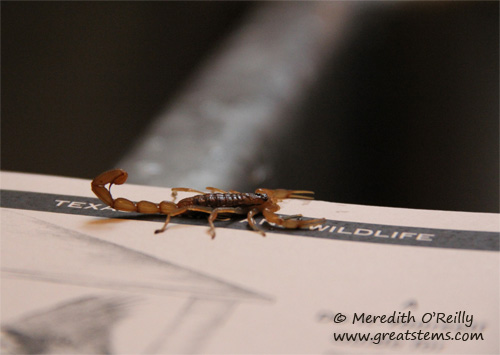
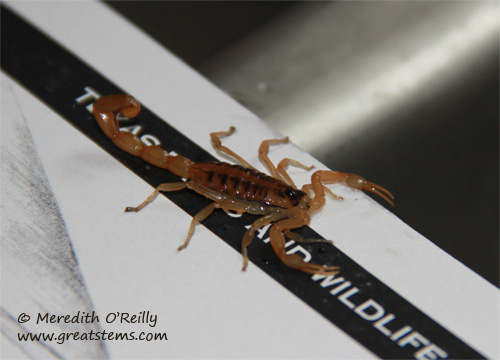
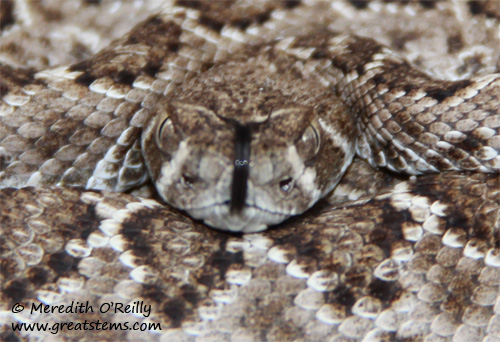
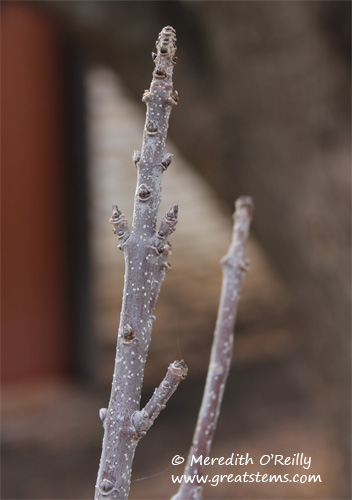 Sticks are not the easiest to take photographs of — and not the easiest to admire in photographs, for that matter. But there is something remarkably fun in having your neighbors walk by as you dig a big hole in the ground and then put in… a stick.
Sticks are not the easiest to take photographs of — and not the easiest to admire in photographs, for that matter. But there is something remarkably fun in having your neighbors walk by as you dig a big hole in the ground and then put in… a stick.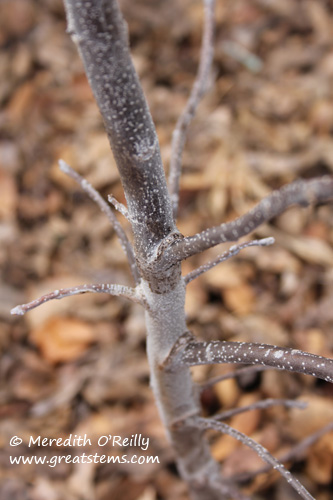
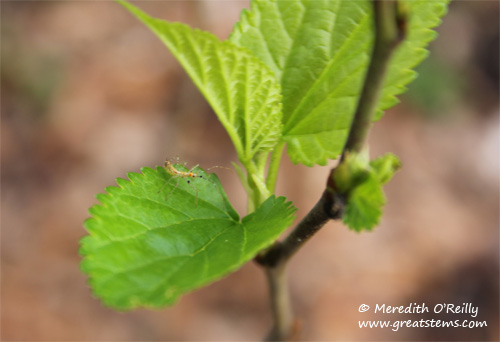
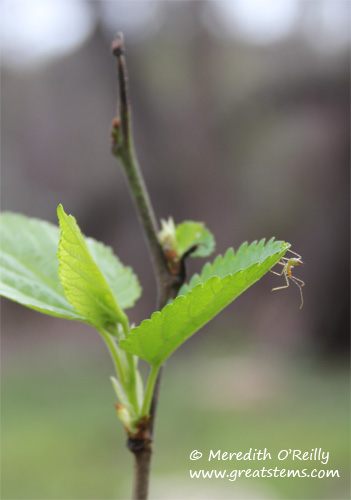 The Red Mulberry already has just a few leaves showing themselves, and a bug nymph stopped by for a visit.
The Red Mulberry already has just a few leaves showing themselves, and a bug nymph stopped by for a visit.